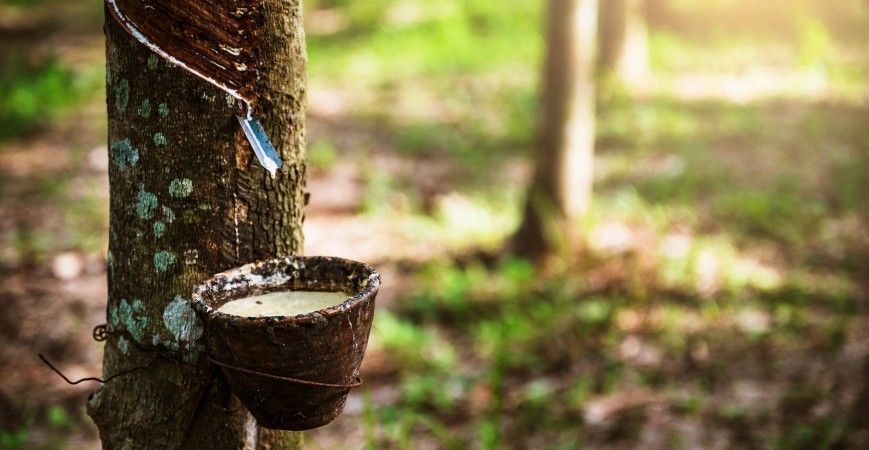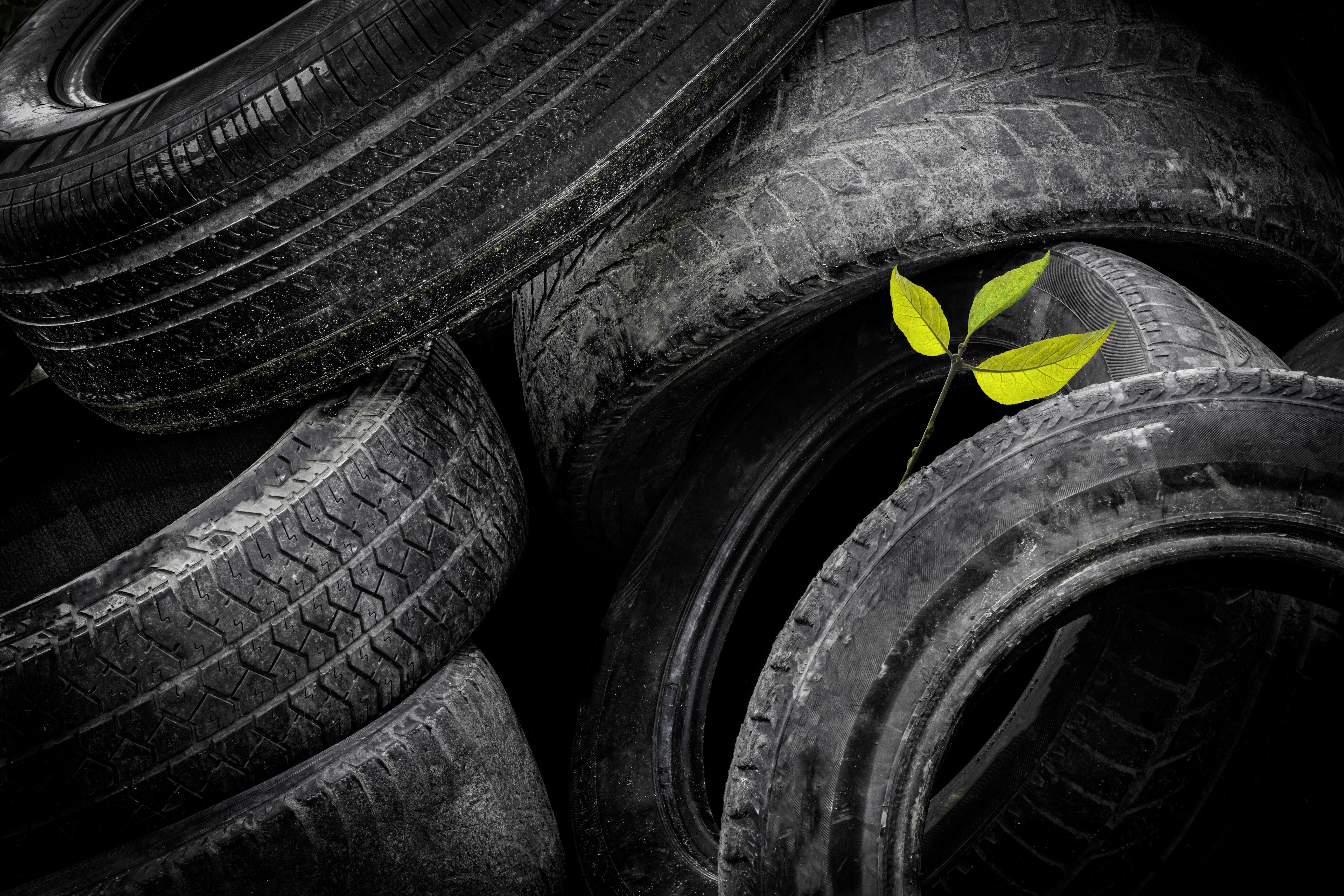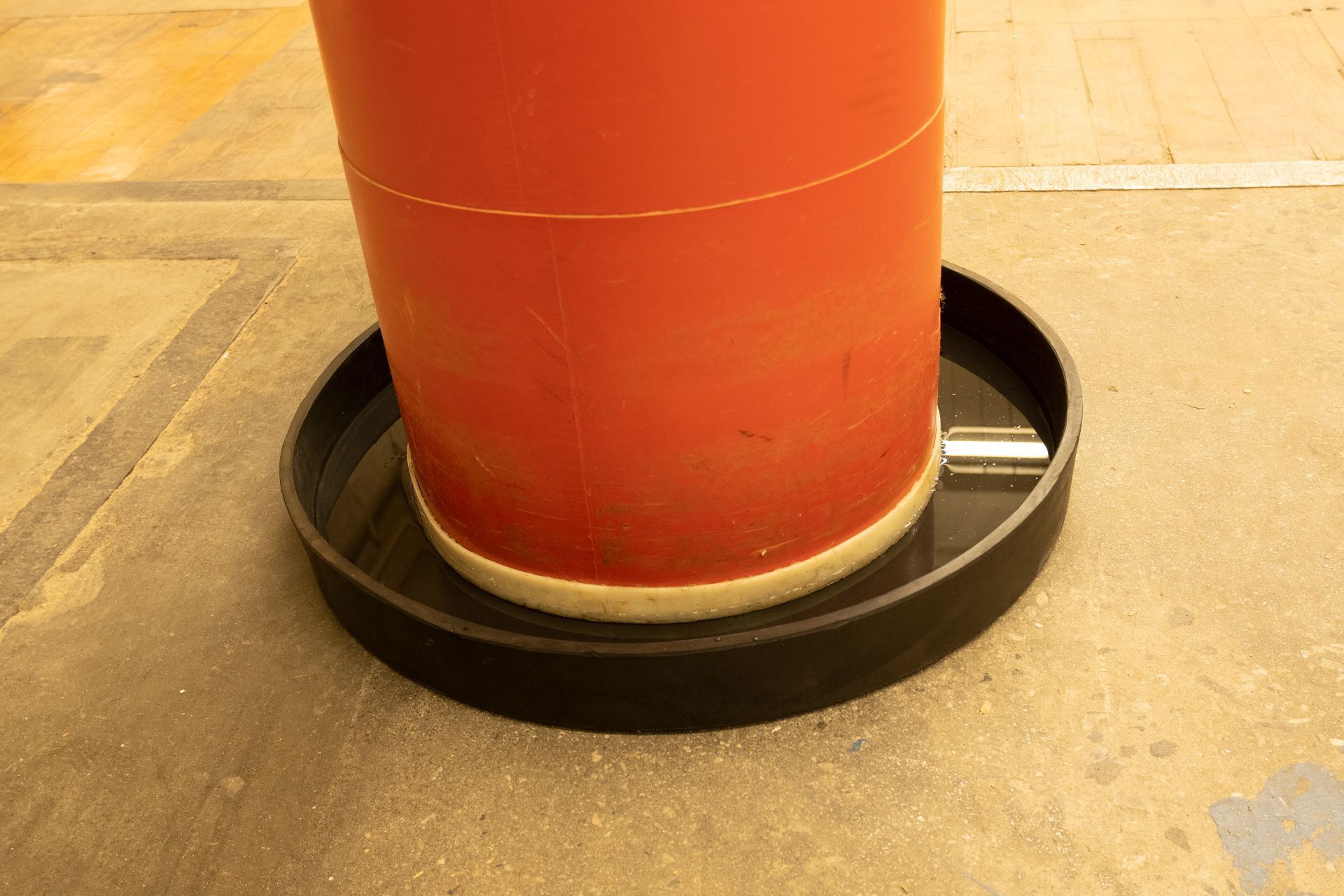
What is Natural Rubber?
Natural rubber, which is derived from a polymer produced by a species of tree named Hevea Brasiliensis, is used in thousands of consumer goods.
These Hevea trees are native to the Amazon rainforest, but over time seeds were migrated to other locations around the world. Because of non-sustainable production practices in South America, the Hevea plant is now mostly grown in Southeast Asia - today, Thailand and Indonesia supply over 90% of the world’s natural rubber. The soil conditions and climate in this region are ideal for rubber production.
Synthetic rubbers exist but do not contain some of the durability characteristics of natural rubber, which is why the natural variety is still extremely popular throughout the world. Additionally, natural rubber is much easier to recycle and re-use later. Synthetic rubbers often end up in landfills and contribute significantly to some of our global pollution issues.
How do we use Natural Rubber in 2021?
Natural rubber can be found in many of the products on store shelves all around you, and of course, the tires on your vehicle. Rubber had been used as early as the 1600s, but in the 19th Century, Charles Goodyear invented the process of Vulcanization - a treatment of rubber with both heat and sulfur. This allows the rubber to withstand changes in temperature; without it, rubber materials would melt in summer and crack in the winter.
He went on to release the first reliable air-filled rubber tire and completely changed the auto industry. Today, the rubber material on tires is usually a combination of natural and synthetic rubbers, but typically enough natural rubber is present to allow for recycling of the rubber material after the tire is no longer in use.
Issues and Concerns with Rubber Supply and Sourcing
The demand for rubber products, including tires, is very high throughout the world. Since this rubber is produced from a manual process of tapping the Hevea Brasiliensis plant, sustainable supply is a concern.
In addition to rubber and all of the products that are created from it, Palm Oil is also produced by Hevea plants and the demand for it has skyrocketed in recent years.
One of the biggest issues with rubber production is the concern of over-farming and deforestation. Since a rubber tree needs around 10 years to mature and produce the necessary latex polymer, it is crucial that Hevea plantations are working to proactively plant more trees as they use up the polymer from matured plants.
For owners and managers of these plantations, it can often be difficult to find adequate labor to tap the rubber trees, since it is very difficult work that does not pay well.
Additionally, bacterial and fungal disease can wipe out entire plantations if it is not caught in the early stages and managed carefully.
Striving Towards Sustainable Rubber Production
In an effort to increase the sustainability and environmental-friendliness of rubber production, the Global Platform for Sustainable Natural Rubber was launched in 2018.

“We are committed to more sustainable production, more responsible sourcing and improved livelihoods of smallholder farmers, in line with the spirit of the United Nations Sustainable Development Goals (SDGs).”
Most of the large automotive and tire manufacturers in the world have joined forces with this organization, and smaller production facilities are encouraged to align their operations with the GPSNR’s recommended sustainable practices.
Introducing a New Use for Natural Rubber: Spill Containment

Killarney Metals was started with a mission to develop spill containment units, drip, and drain pans, that were more durable and reliable than the cheap plastic trays you can find on the shelves of big-box stores.
In addition to our Aluminum, Galvanized, Stainless, and Powder-coated Steel options, we’re introducing a natural rubber drip pan!
Our first natural rubber pan is a 24” diameter round pan, designed for use with water heaters or any other appliance that has a round footprint.
These rubber pans are not only durable and reliable just like our metal options, but they also possess an insulative property which is fantastic for tank water heaters. If your water heater sits atop a concrete slab, as many do, the rubber drip pan will help to insulate the tank and allow your water to heat much quicker during cold months.
If you have questions about how a rubber pan may work for your application, our team is here. Shop rubber pans now, or contact us and we’ll be happy to help!